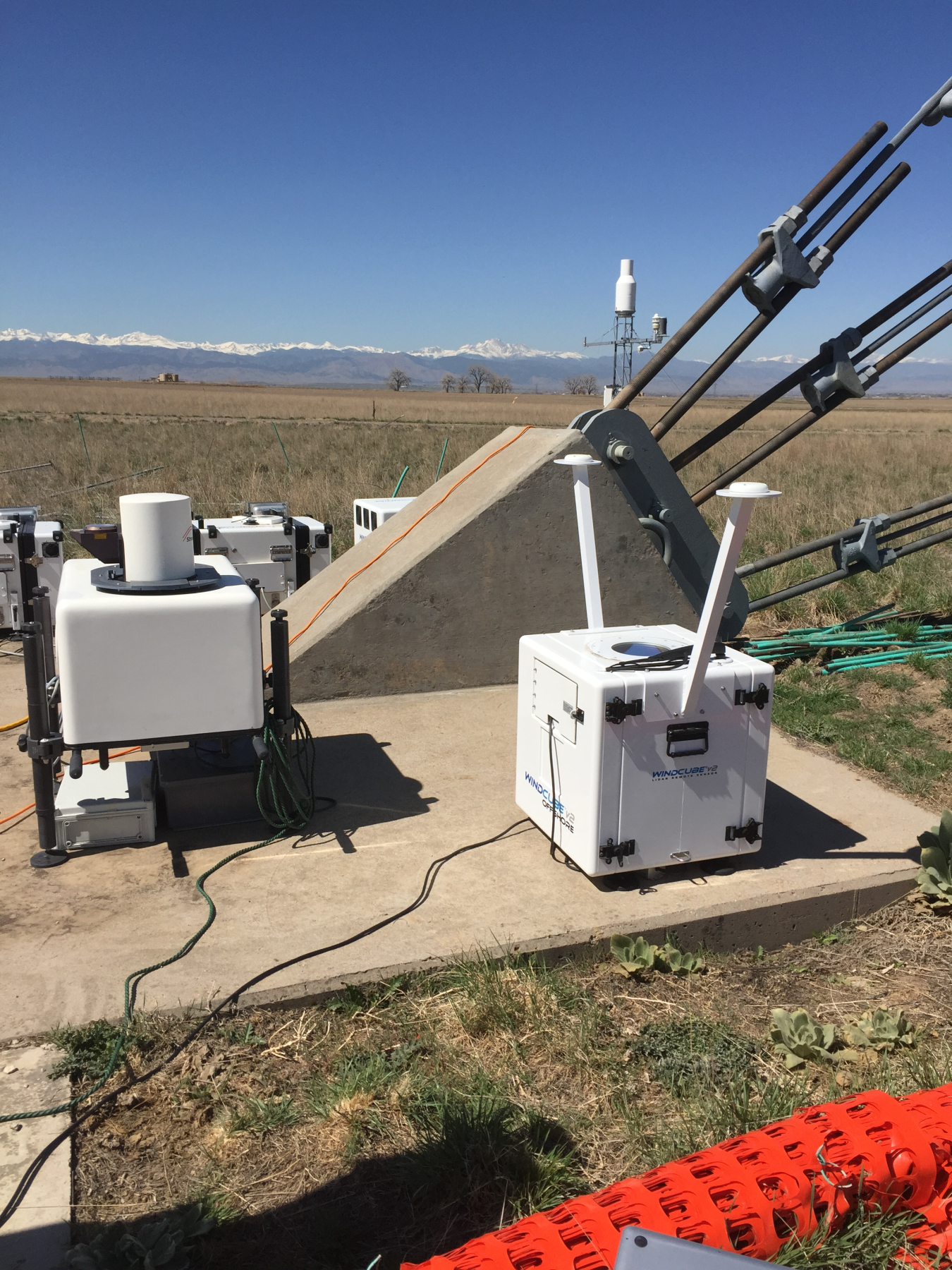A one-of-a-kind experiment combined multiple measurement devices and methods to simultaneously measure atmospheric conditions in one location. One ...
May 19, 2017
Photo showing the base of the 984-foot (300-meter) meteorological tower and several of the atmospheric instruments used during the XPIA field experiment. Photo by Andy Clifton/National Renewable Energy Laboratory
A one-of-a-kind experiment combined multiple measurement devices and methods to simultaneously measure atmospheric conditions in one location. One of the first projects of the U.S. Department of Energy’s (DOE’s) Atmosphere to Electrons (A2e) initiative, the eXperimental Planetary boundary layer Instrumentation Assessment (XPIA) project represented a collaboration among multiple organizations and illustrated the varying degrees of accuracy among different measurement methods over a period of time.
Results were recently published by the American Meteorological Society.
To gather the data, researchers installed numerous measurement devices—radiometers, sodars, radars, and scanning and profiling lidars, including a lidar mounted on a motion table that mimicked the movement of the ocean—next to a 300-meter atmospheric observation tower in Erie, Colorado. Over two months, the devices measured temperature, wind speed, and direction within the atmospheric boundary layer, a region from 0 to 1,500 feet (300 m) above ground in which people live, work, and erect wind turbines.
“New measurement technologies and methodologies can improve our understanding of the atmospheric boundary layer, but there is a critical need to understand their capabilities and limitations,” said Mike Derby, U.S. Department of Energy. “That’s why the XPIA research project was unique—it combined multiple organizations, multiple devices, and a very tall tower to collect data that illustrate the accuracy of different measurement methods over periods of time from weeks to months. The results represent a treasure trove of data now available for future wind plant investigations.”
The data show how measurement accuracy changes over minutes to hours based on atmospheric conditions.
“It’s important to understand the different methods that can be used and their accuracy,” Derby said. Derby continued, “We learned that accuracy is directly tied to the atmospheric conditions under which the measurement is taken. For instance, lidars emit a pulsed laser, which bounces off of small particles in the air and returns to the machine. The change in distance of those tiny particles over very short intervals of time (less than a second) can be used to determine wind speed and direction. However, lidars do not perform well in precipitation, while the Ka-band radars do perform well in moderate precipitation. Understanding the accuracy and uncertainty associated with the measurement techniques and instruments is what makes this work so important.”

